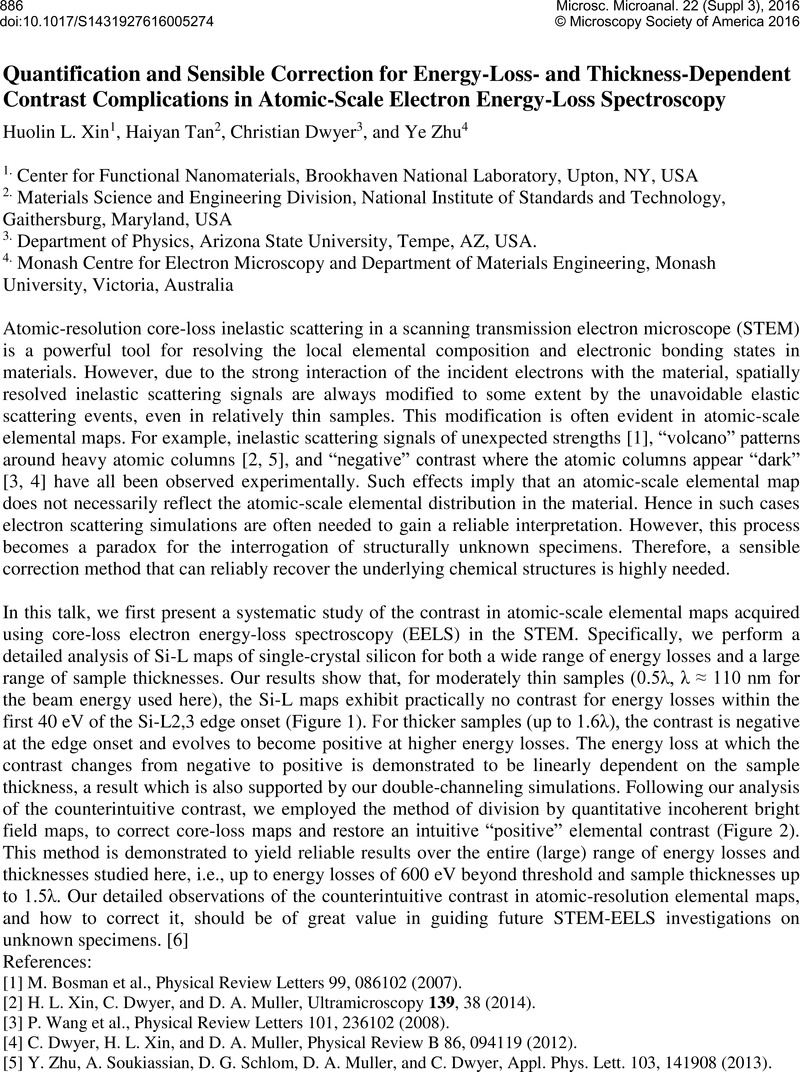No CrossRef data available.
Article contents
Quantification and Sensible Correction for Energy-Loss- and Thickness-Dependent Contrast Complications in Atomic-Scale Electron Energy-Loss Spectroscopy
Published online by Cambridge University Press: 25 July 2016
Abstract
An abstract is not available for this content so a preview has been provided. As you have access to this content, a full PDF is available via the ‘Save PDF’ action button.

- Type
- Abstract
- Information
- Microscopy and Microanalysis , Volume 22 , Supplement S3: Proceedings of Microscopy & Microanalysis 2016 , July 2016 , pp. 886 - 887
- Copyright
- © Microscopy Society of America 2016
References
References:
[4]
Dwyer, C., Xin, H. L. & Muller, D. A.
Physical Review B
86, 094119
(2012).CrossRefGoogle Scholar
[5]
Zhu, Y., Soukiassian, A., Schlom, D. G., Muller, D. A. & Dwyer, C.
Appl. Phys. Lett
103, 141908
(2013).Google Scholar
[6] H.L.X. acknowledges support from Center for Functional Nanomaterials, Brookhaven National Laboratory, which is supported by the U.S. Department of Energy, Office of Basic Energy Sciences, under Contract No. DE-AC02-98CH10886. This work made use of the electron microscopy facility of the Cornell Center for Materials Research (CCMR) with support from the National Science Foundation Materials Research Science and Engineering Centers (MRSEC) program (Contract No. DMR 1120296). Experimental data recording, and H.L.X. for that period, was supported by the Energy Materials Center at Cornell (emc2), an Energy Frontier Research Center funded by the U.S. Department of Energy, Office of Basic Energy Sciences, under Award No. DESC0001086. H.T. acknowledges financial support from Centre d’Elaboration de Materiaux et d’Etudes Structurales, CNRS, and National Institute of Standards and Technology, USA.Y.Z. and C.D. gratefully acknowledge financial support from the Australian Research Council (Grant No. DP110104734). C.D. acknowledges support from the Ernst Ruska Centre.Google Scholar




